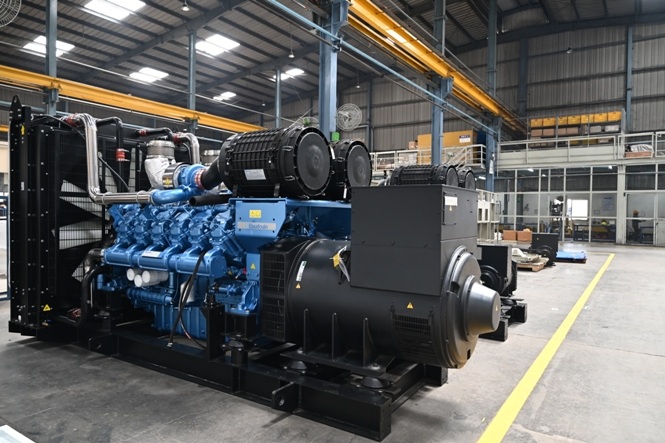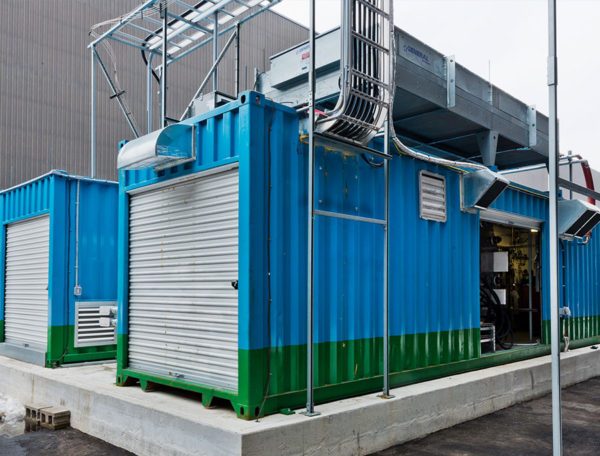Technological advancements in generators and electrolyzers can help in cost-effective production of clean hydrogen – a fuel that can potentially redefine our energy landscape, notes Sanjay Jadhav.

Hydrogen-based technologies, particularly green hydrogen, are increasingly getting recognised as the future of renewable energy in India and across the world. Although hydrogen is like conventional renewable sources such as solar or wind, the stand-out feature is its cost-effectiveness. Additionally, hydrogen-based technologies are easier to integrate and maintain at a grid level which helps rationalise CapEx and OpEx costs.
To the uninitiated, green hydrogen involves the electrolysis of water. During this scientific process, the oxygen molecules are released whereas the captured hydrogen in its purest form can be used as energy. Although the electrolysis process seems clean, the technology can be 100% cleaner only when renewable energy sources are used in the chemical process. In fact, advancements in electrolysis technology and the decreasing cost of renewable energy are enabling efficiency in the production of green hydrogen. According to projections from the International Energy Agency (IEA), green hydrogen could soon emerge as the most cost-effective forms of renewable energy.
The benefit of green hydrogen is immense, specifically in case of industries that are hard to decarbonise through electrification alone. For instance, steel and chemical industries can use hydrogen as a clean alternative to fossil fuels. IEA estimates that by 2050, demand for hydrogen in these sectors could drive substantial growth while the industrial sector could embark as the biggest adopters of clean hydrogen by 2030. Meeting this bourgeoning demand prompts the power sector to focus on two aspects – advancements in generator technology and innovations in electrolysers.
Advancements in generator technology
Although modern generators are increasingly capable of efficiently integrating with hydrogen systems, thanks to innovations in both hardware and software, significant transition must be observed in case of fossil-fuel based generators. From a design perspective, newer technologies focus on enhanced materials to allow for efficient energy conversion and lower operational costs. For instance, new turbine materials can withstand higher temperatures and pressures thereby improving the efficiency and durability of hydrogen-powered generators. Industry specific use-cases such as data-centers demand usage of techniques such as artificial intelligence and machine learning. That is to optimise generator performance by predicting maintenance needs and improving operational efficiency.
Many system designers also opt for backward compatibility – meaning that a generator not only tethers to a hydrogen generator but could also integrate with a traditional fossil fuel source for dependability.

The implementation of advanced generator technologies is also supported by significant investments in infrastructure and government policies aimed at promoting hydrogen energy. Governments worldwide are recognising the potential of hydrogen as a clean energy carrier and are implementing policies to support its adoption. These policies include subsidies for hydrogen production and infrastructure development, carbon pricing mechanisms to make hydrogen more competitive, and investments in research and development. Moreover, collaborations between the public and private sectors are accelerating the deployment of hydrogen technologies. For example, the construction of hydrogen refuelling stations and pipelines is crucial for the widespread adoption of hydrogen-powered generators. These infrastructural developments, combined with technological advancements, are creating a robust ecosystem for hydrogen energy, making it a viable and sustainable option for the future.
Catalysing Electrolyser Innovations
An innovation in hydrogen electrolyser technology is the need of the hour to embrace futuristic demands of growing economies like that of India. A major innovation has been the development of proton exchange membrane (PEM) electrolysers, which offers several advantages over traditional alkaline electrolysers. The use of advanced materials in PEM electrolysers, such as catalyst-coated membranes and corrosion-resistant components, has also enhanced their durability and performance, further reducing the cost of hydrogen production over time.
Solid Oxide Electrolyser Cells (SOECs) can also help since they operate at high temperatures (typically between 700°C and 1000°C). SOECs are highly efficient because they use both electricity and heat to split water into hydrogen and oxygen, making them particularly suitable for industrial applications where waste heat is available. Utilisation of SOECs reduces the electrical energy required for electrolysis, improving overall energy efficiency. Additionally, SOECs can also co-electrolyse water and carbon dioxide to produce syngas, a mixture of hydrogen and carbon monoxide, which can be used to synthesise a variety of valuable chemicals and fuels, thus broadening the scope of hydrogen applications.
Innovations in the scaling and modularisation of electrolysers have also made them more adaptable to various industrial scales and applications. Modular electrolyser systems can be easily scaled up by adding more units, allowing for flexible production capacities and reducing the initial capital investment required for hydrogen production facilities. This modular approach also simplifies maintenance and reduces downtime, as individual modules can be serviced without shutting down the entire system. Innovations in digital technology, such as the use of artificial intelligence and advanced monitoring systems, are further optimising the operation of electrolysers. These systems can predict maintenance needs, optimise energy use, and improve overall system efficiency by analysing data in real time.

Advancements in reducing the cost of critical materials used in electrolysers are making hydrogen production more economically viable. Researchers are developing cheaper and more abundant alternatives to rare and expensive materials like platinum and iridium, which are currently used as catalysts in PEM electrolysers. For example, transition metal-based catalysts and earth-abundant materials are being explored for their potential to replace precious metals without compromising performance. This reduction in material costs, combined with the improved efficiency and scalability of modern electrolysers, is driving down the overall cost of green hydrogen production. As these innovations continue to progress, they are expected to play a crucial role in the widespread adoption of hydrogen as a clean and sustainable energy source.
The future of renewable energy is undeniably bright, driven by significant advancements in generator technology and hydrogen electrolysers. The ability to convert excess renewable energy into hydrogen, which can be stored and used later helps create a versatile energy carrier. This technology not only enhances the efficiency of renewable energy systems but also paves the way for hydrogen to become a central player in a sustainable energy economy. With continuous improvements in efficiency and cost-effectiveness, hydrogen electrolysers are poised to unlock new possibilities for clean energy, ensuring a future where renewable sources are not just supplementary but the cornerstone of global energy infrastructure. The synergy between advanced generators and hydrogen electrolysers is set to redefine our energy landscape, driving us closer to a sustainable and resilient future.
(About the author: Sanjay Jadhav is Chief Executive Officer, Sterling Generators Pvt Ltd)


